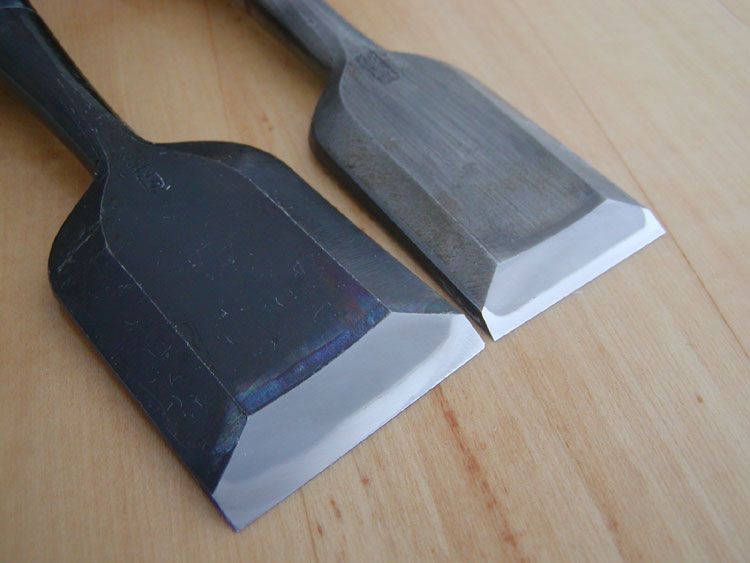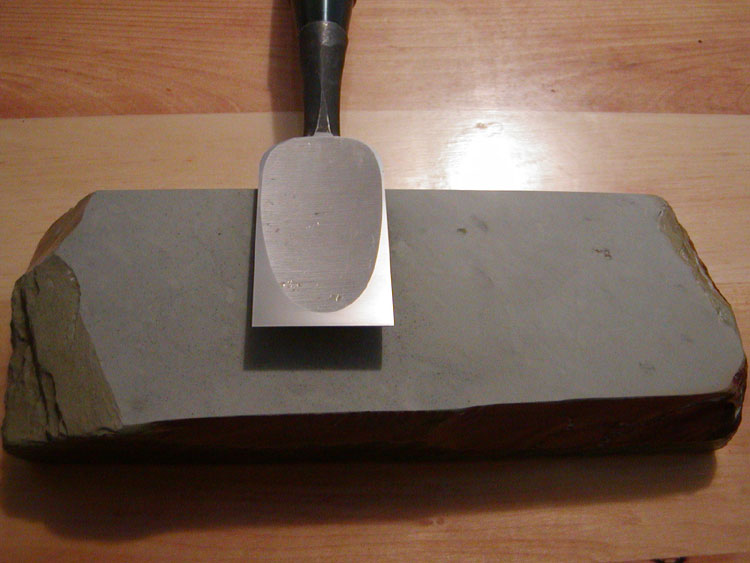The issue of whether shiny equals sharp has come up in this forum before. Although oftentimes the advice is given is to use whatever sharpening method you use to achieve a mirror finish, there are two problems with this piece of advice.
First, a sharp edge is achieved by the intersection of two flat surfaces, and flat is not necessarily the same as a mirror finish. If you don't believe this, look at any funhouse mirror, or the parabolic reflector in a flashlight. Those are certainly reflective surfaces that are not flat at all. A mirror finish is a characteristic of how even/repetitive the surface pattern is. You can certainly achieve a flat surface that is reflective, and you can use the reflection to see how flat your surface is by seeing if there is visible distortion in the reflected image in your tool. But the fact is that the flat and mirror finish are not equivalent.
Second, from an observational standpoint, tools sharpened with manmade Japanese waterstones will take on a very reflective surface, but those same tools sharpened with natural Japanese waterstones often can have a hazy or matte surface, even though either method can result in an extremely sharp edge. Here's an example of some chisels sharpened with natural Japanese waterstones, where you can see the matte finish that is left by the waterstone:
I've always felt that one explanation for this phenomenon is that the grit sizes in natural Japanese waterstones had more variation than what is seen in manmade waterstones. This leads to a more random scratch pattern in tools sharpened with natural Japanese waterstones, which diffuses light, which leads to the hazy surface. Manmade waterstones, on the other hand, will leave a more regular scratch pattern, which leads to an increased reflectivity and that mirror finish.
Recently, Ron Hock has posted some electron micrographs of tools sharpened with natural and manmade waterstones that support this theory. The tools sharpened with natural Japanese waterstones have a more random scratch pattern compared to the manmade waterstones. This may not be entirely due to grit size variation. It could also be that the natural Japanese waterstone develops more of a slurry, and that the sharpening particles are moving in a more random manner than the manmade waterstone, where it could be that the majority of sharpening particles are still embedded in the matrix. The shape of the abrasive particles also probably plays a role.
Again, this is not to say that you should aim for either a matte or mirror finish when sharpening. The point is that how reflective the tool surface is not necessarily the same as a flat surface, and flatness is really the goal when sharpening a tool.






 Reply With Quote
Reply With Quote



 Jr.
Jr. 



